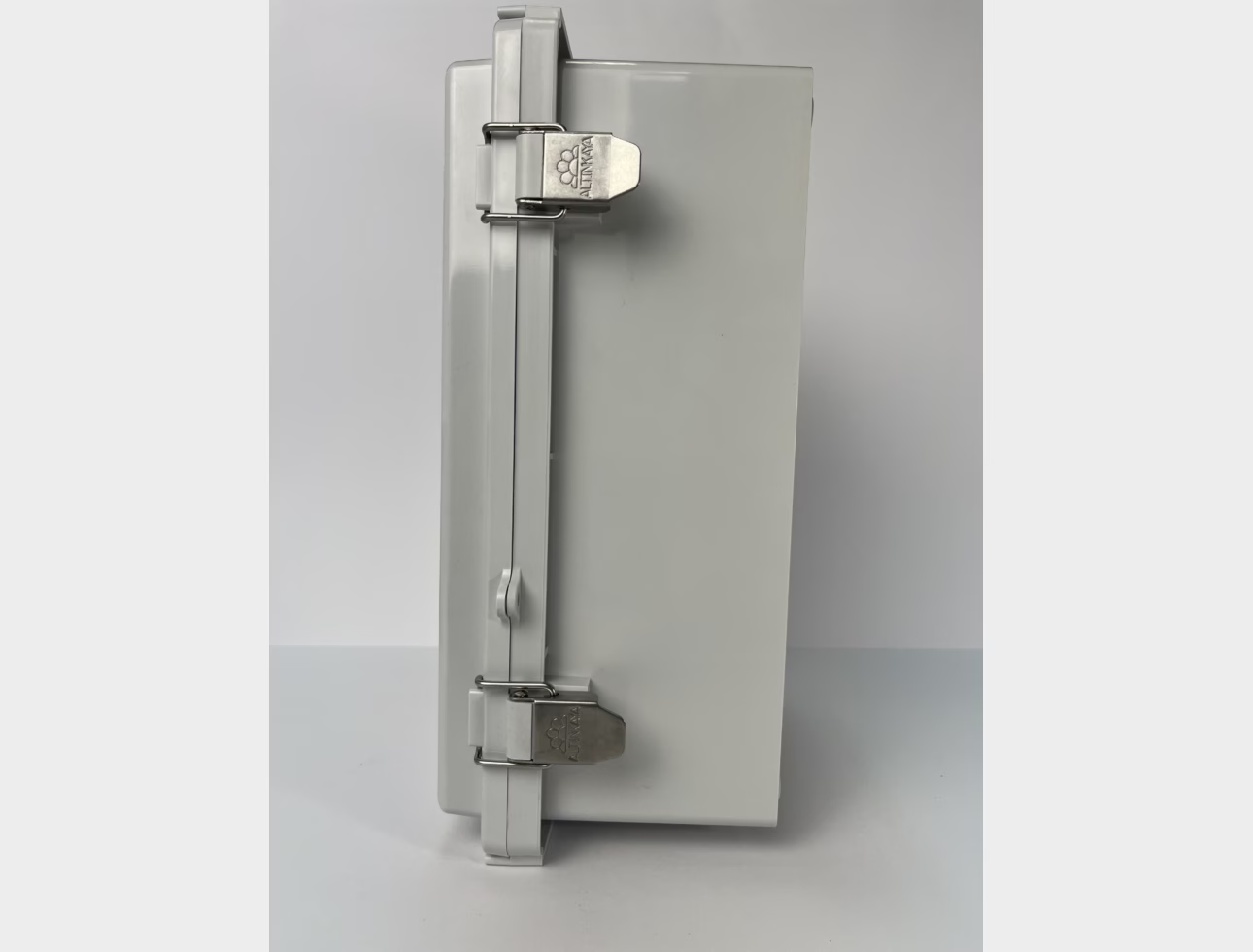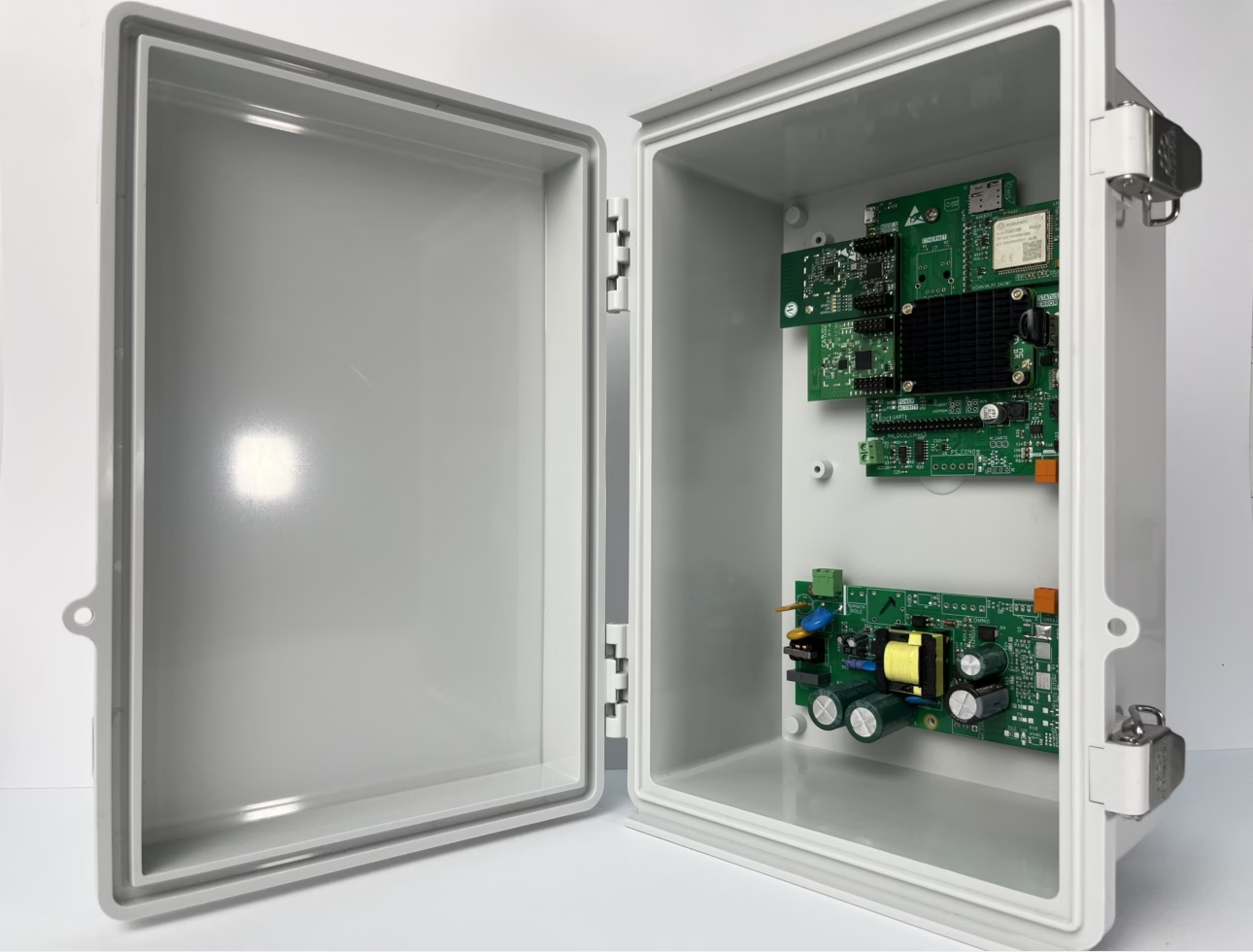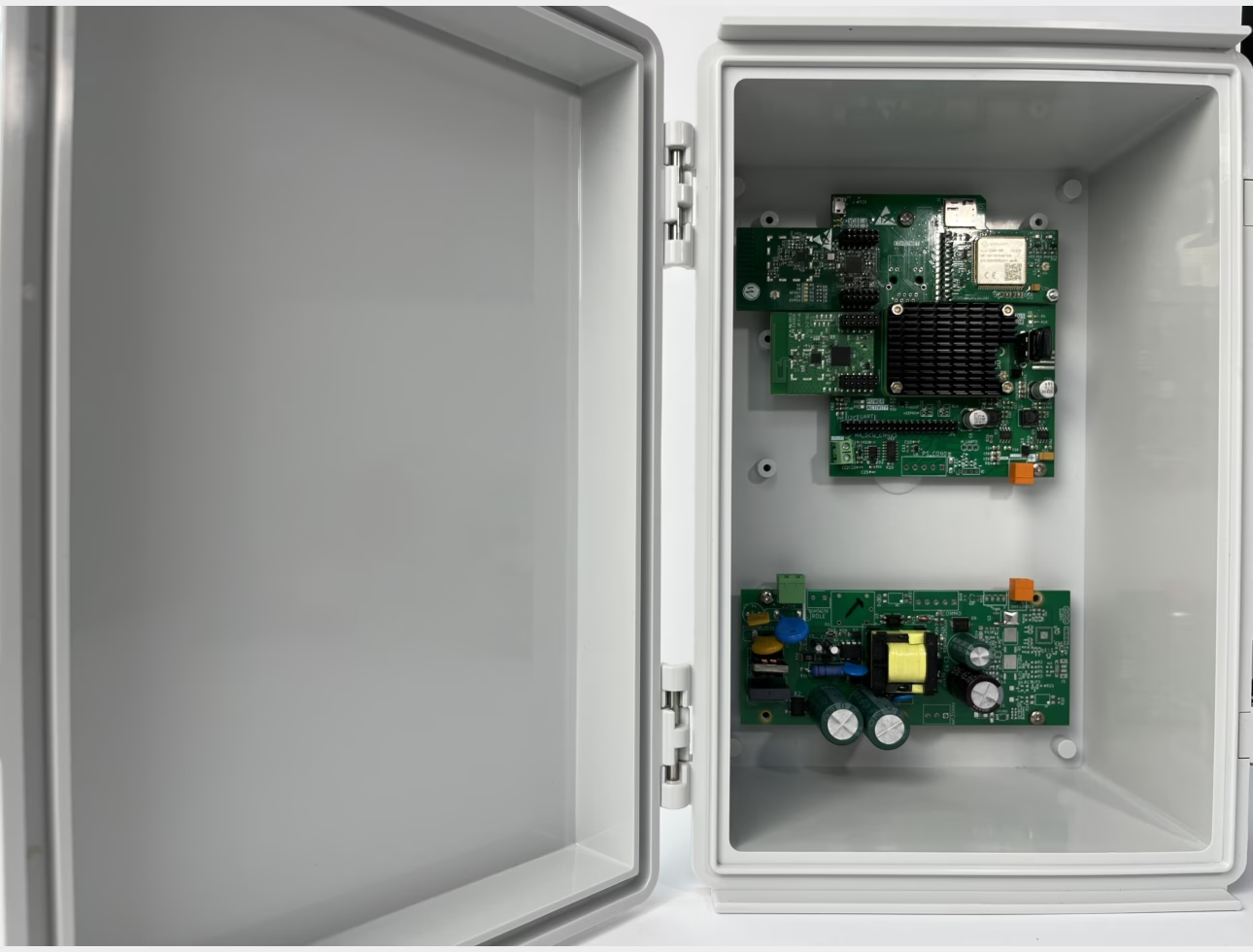It securely collects critical data from wireless RF mesh networks and other environmental sensors in the field, processes it locally, and transmits it to central management systems via secure connections. It offers uninterrupted operability and flexible integration capabilities in challenging field conditions.
Hardware Features:
Embedded Computer: The system utilizes an embedded computer based on the Raspberry Pi Compute Module 4 (CM4), providing high processing power. This powerful platform offers the ability to perform complex data processing and analysis tasks in the field.
USB Hub Integration: The CM4's single USB interface is expanded to multiple USB 2.0 ports via an integrated USB hub chip. This ensures high-speed (480 Mbit/s) data transfer with critical peripheral units such as the GSM module, RF modems, and external Flash memory.
Multiple Communication Modules:
4G/LTE Modem: An industrial-grade LTE module like the GOSUNC GM196 is integrated. This module provides high-speed and reliable cellular data transfer from the data collector to central web services. It includes a Nano SIM card slot and supports various LTE FDD, LTE TDD, and GSM bands. UART connections are available for debugging and parameter settings.
RF Modem Connectors: It contains special connectors for two U-MOTE (868 MHz) or Mahmote (2.4 GHz) RF modem modules to communicate with the IETF 6TiSCH-based RF Mesh network. Thanks to these two interfaces, the data collector can simultaneously support RF communication at both 868 MHz and 2.4 GHz frequencies. While these modems transfer data to the CM4 via the USB interface, UART and GPIO connections are used for programming and resetting the modems.
RS-485 Interface: An integrated RS-485 driver circuit is available for receiving data from ADC cards or other RS-485 supported industrial devices and for software updates. This interface communicates directly with the CM4's UART unit.
Ethernet Port: An Ethernet (RJ45) port is available for internet access to the device or local network access. This port is protected by TVS diodes against sudden high voltages and can communicate at 300 Mbps.
Power Subsystem: It includes two switched DC-DC voltage regulators that provide 4.2V for the GSM module and 3.3V for the CM4 and other integrated circuits from a 12V input. These regulators provide low-noise power supply.
Uninterruptible Power Supply (UPS) Module: Designed as a separate module, the UPS ensures the main control board (data collector) operates during power outages. It includes a 220V/12V AC-DC isolated converter, battery control circuit, fan, and relay connections. It offers at least 4 hours of backup operation time with LFP (Lithium Iron Phosphate) batteries. It actively balances battery cell voltages by monitoring them. It sends a safe shutdown signal to the main control board when the critical energy level is reached and ensures safe restart when grid power returns. A temperature sensor is integrated and can control the internal fan.
Data Storage: An external Flash memory can be attached for device logs and backups. Operating system files are stored as read-only in the CM4's internal eMMC Flash memory to protect system integrity.
Additional Interfaces: I2C and SPI interfaces are available for optional sensor connections. Fan and relay outputs, controllable via the power module, are present.
Programming Ports: A micro USB port is available for programming the CM4's eMMC memory, and a female USB-A port (can be used with an Ethernet-USB converter) is available for local network access via the main board.
Software Details:
Embedded Operating System: A Linux-based operating system (e.g., Debian-based Raspberry Pi OS) runs on the Raspberry Pi Compute Module 4.
Network Interface Drivers: Software-based, IPv6-enabled network interface drivers have been developed to transfer IPv6 data packets from the RF mesh network to Linux's TCP/IP stack.
Data Collection and Management Application: A central application developed in Rust programming language processes data from various UDP ports and records it to a MariaDB database. Responsible for lossless data collection and secure storage. Transmits commands from the meter management system to the RF mesh network and ensures their processing. Provides a local web interface showing the status of the RF mesh network.
System Health and Error Management:
Software modules are available to monitor hardware health. Capable of restarting 4G modem and RF interfaces when necessary. Continuously checks whether the 4G module is connected to the central system and the integrity of data coming from the RF network.
UPS Integration Software:
Communicates with the microcontroller in the UPS module via UART and GPIO pins to monitor battery status. Ensures the data collector safely shuts down when battery charge drops to a critical level during a power outage. Manages the procedure of cutting power to the Main Control Board after shutdown is complete and safe restart when grid power returns.
Device Drivers: Drivers have been developed to interface with peripheral hardware such as RS-485, I2C, SPI, and Relay.
Remote Management Capabilities: A system exists for storing and transmitting remote software update files for modems to the data collector.
Key Features and Advantages:
Centralized Data Collection: Collects, processes, and stores data from RF mesh networks and industrial sensors at a single point.
Uninterrupted Operation: Operational continuity without data loss even during power outages, thanks to integrated UPS and intelligent power management.
Comprehensive Connectivity: Broad integration capability with multiple communication interfaces such as 4G/LTE, RF Mesh, Ethernet, and RS-485.
Data Security and Integrity: Secure storage in a local database, operating system integrity protection, and secure data transfer protocols.
Remote Monitoring and Management: Remote monitoring of device status and performance in the field, and remote firmware update capability.
High Performance: Real-time data processing and analysis capacity with the powerful CM4 processor.
Durability in Harsh Conditions: Robust hardware designed for outdoor operation and a structure that can be housed in an IP67 enclosure.



